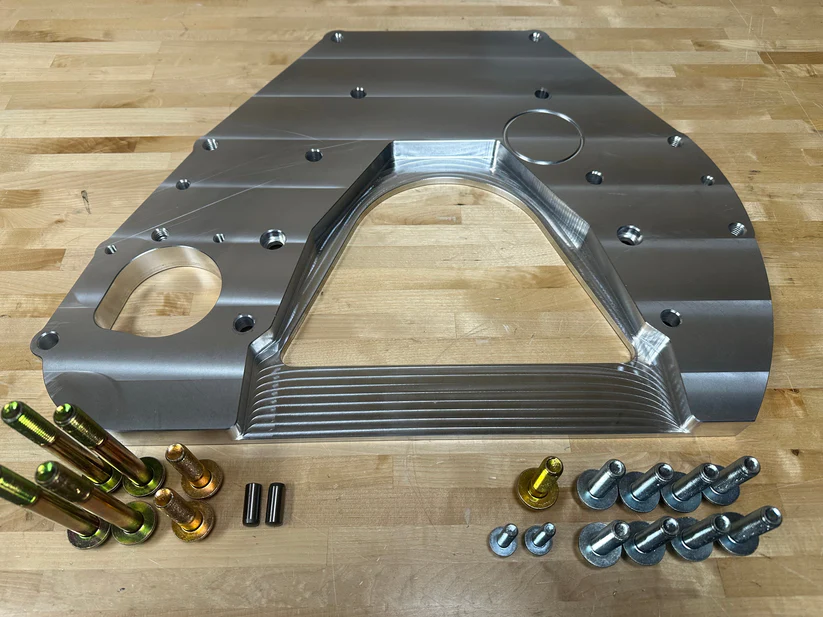Swapping a Cummins engine into a non-Cummins vehicle—whether it’s a Ford, Chevy, or an older Dodge—is an exciting way to improve power, torque, and reliability. Cummins engines are legendary for their durability and performance, making them a top choice for diesel enthusiasts and off-roaders. However, like any major mechanical modification, a Cummins engine conversion can bring its fair share of headaches if not done right. Understanding the most common issues and how to troubleshoot them is key to a successful, long-lasting swap.
1. Fitment and Clearance Problems
One of the first hurdles during a Cummins swap is physical fitment. The 6BT or 12-valve Cummins engines are large and heavy. If you’re installing one into a smaller engine bay or an older chassis, expect clearance issues with the firewall, hood, and radiator.
Troubleshooting Tips:
- Test fit the engine and mark clearance issues before permanent installation.
- Consider using aftermarket engine mounts or modifying the frame rails or firewall as needed.
- Opt for a body lift if hood clearance is too tight.
- Install a low-profile intake manifold or aftermarket turbo to help with space.
2. Transmission Compatibility
Another major challenge is pairing the Cummins engine with a transmission that fits your vehicle. The Cummins is often swapped into Fords (e.g., F-250/F-350) or GM trucks, which originally come with different bolt patterns and torque ratings.
Troubleshooting Tips:
- Use a Cummins conversion adapter kit designed for your specific transmission.
- Be cautious with automatic transmissions; ensure they can handle the torque.
- Recalibrate the torque converter and valve body settings for proper performance.
- Manual transmissions may need a custom clutch setup or flywheel spacer.
3. Wiring and Electrical Integration
Wiring can become one of the most time-consuming parts of the swap, especially when integrating the Cummins engine into a newer truck with electronic modules and sensors.
Troubleshooting Tips:
- Use standalone engine harnesses or Cummins swap wiring kits from reputable sources.
- Label all wires before removal and document sensor positions.
- Be prepared to bypass or rewire gauges such as the tachometer, speedometer, and oil pressure.
- If your donor vehicle has a CAN bus system, consider using a data translator or a standalone ECU.
4. Cooling System Challenges
Cummins engines generate a lot of heat, especially under heavy loads. If your vehicle’s radiator and fan setup isn’t up to the task, you could face overheating issues.
Troubleshooting Tips:
- Upgrade to a high-capacity aluminum radiator designed for diesel engines.
- Use an electric fan setup with a high CFM rating or retain the mechanical fan with proper shrouding.
- Ensure proper routing of upper and lower radiator hoses to prevent flow restrictions.
- Don’t forget to integrate the heater core for cabin heat and pressure balance.
5. Drivetrain and Suspension Stress
Cummins engines are heavy, often adding 400–600 pounds to the front end of a truck. This added weight can stress the front suspension, steering components, and drivetrain.
Troubleshooting Tips:
- Upgrade front springs or convert to heavy-duty coilovers or leaf packs.
- Reinforce motor mounts and crossmembers to handle engine torque.
- Consider upgrading driveshafts, U-joints, and axle gearing to handle increased power.
- Inspect alignment and tire wear regularly after the swap.
6. Fuel Delivery Incompatibility
Depending on the original fuel system, you may need to upgrade fuel lines, pumps, and filters. Cummins engines require high fuel flow and consistent pressure, especially for the injection pump.
Troubleshooting Tips:
- Install a high-flow lift pump and a proper fuel pressure regulator.
- Use fuel filters compatible with diesel applications.
- Replace old rubber fuel lines with ones rated for diesel fuel.
7. Turbo and Exhaust Routing
Cummins turbos can pose routing challenges due to their size and location. You may also need to modify or upgrade the exhaust system to handle increased flow and keep EGTs in check.
Troubleshooting Tips:
- Use a high-flow downpipe and custom exhaust system to reduce back pressure.
- Consider upgrading to a better turbo if you’re planning high-performance output.
- Install an EGT gauge to monitor exhaust temperatures under load.
8. Emissions Compliance (Where Applicable)
In some areas, emissions compliance can be a legal barrier. Dropping a pre-emissions engine into a newer truck may trigger problems with inspections and registration.
Troubleshooting Tips:
- Check local and provincial/state regulations before doing the swap.
- Use a donor engine that matches or exceeds the emissions standard of the original vehicle.
- In off-road-only builds, this may not be a concern, but always clarify your region’s laws first.
Final Thoughts
Cummins engine conversions are incredibly rewarding when done right, but they’re not plug-and-play projects. Each build presents its own set of challenges based on vehicle type, engine model, and intended use. By preparing for common issues like wiring integration, cooling upgrades, drivetrain reinforcements, and fitment limitations, you can avoid many of the pitfalls that frustrate first-time swappers.
Partnering with knowledgeable mechanics or using a renowned Ford Cummins conversion kit can help streamline the process. Whether you’re looking for more pulling power, improved reliability, or just a cool diesel swap, tackling the troubleshooting head-on is the key to a successful Cummins conversion.
